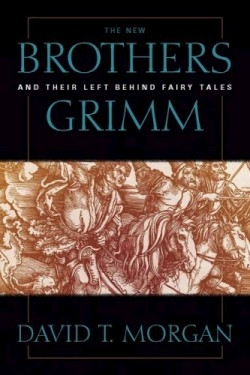The New Brothers Grimm
And Their Left Behind Fairy Tales
Aside from the Harry Potter books, few recent series have sold as well as the Left Behind novels by Tim LaHaye and Jerry B. Jenkins. In The New Brothers Grimm and Their Left Behind Fairy Tales, retired history professor David T. Morgan asserts that these authors have woven their narratives around radical interpretations of scripture and are no better than children’s fable writers Jacob and Wilhelm Grimm.
The introduction contains Morgan’s skillful outline of the pre-millennial dispensationalist movement, which has given birth to the Left Behind phenomenon. He effectively relates that although most scholars have viewed as symbolic the Bible’s apocalyptic references, chiliastic preachers for centuries have selectively interpreted—and added to—the Bible to predict events that will occur at the “end of days.” Morgan lambastes LaHaye and Jenkins for smuggling their radical apocalyptic views to readers under the guise of fiction and concludes that the “new brothers Grimm” are selling “theological snake oil” to their readers.
Summaries and analyses follow for each of Left Behind volumes (as well as the first books in two subsequent series, Babylon Rising and Left Behind: The Kids). Morgan attacks the authors’ embellishments, pointing out how far from scripture they veer. He relates, for example, inadvertently comedic aspects of LaHaye and Jenkins’ stories, like the scene in Apollyon in which a Jewish master of ceremonies leads thousands of people from all corners of the globe in a rousing chorus of “Amazing Grace.” Morgan expresses his wonder that “the new brothers Grimm have the audacity to turn this imaginative world event into an American-style revival meeting.” He also poses a legitimate question: Why do LaHaye and Jenkins reject some direct descriptions from Revelations, like Christ destroying his enemies at Armageddon with a sword in his mouth, while portraying most biblical elements—including Christ riding out at Armageddon on a white horse—literally?
LaHaye and Jenkins’ reliance throughout the series on repetitious “testimonies” and other recurring elements receives particular scorn. Ironically, this latter criticism reflects back on Morgan’s own work. Repeatedly—often up to three times per page—he calls the authors the “new brothers Grimm,” but he does not use the analogy to provide any meaning beyond the surface reference to fairy tales, ultimately annoying more than enlightening the reader.
Despite this irritation, The New Brothers Grimm will have great appeal for two groups: those seeking a condensation of the Left Behind books’ plot and characters and those who are skeptical about the agenda behind the series. Fans of LaHaye and Jenkins who are unwilling to entertain criticism of the authors’ theological, moral, political, and social views probably will fail to appreciate Morgan’s insights.
Disclosure: This article is not an endorsement, but a review. The publisher of this book provided free copies of the book to have their book reviewed by a professional reviewer. No fee was paid by the publisher for this review. Foreword Reviews only recommends books that we love. Foreword Magazine, Inc. is disclosing this in accordance with the Federal Trade Commission’s 16 CFR, Part 255.

